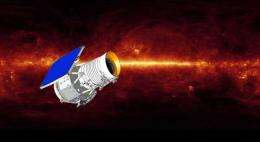Wide-field Infrared Survey Explorer Coming Together

(PhysOrg.com) -- The science instrument for NASA's Wide-field Infrared Survey Explorer has been shipped to Boulder, Colo., for a planned launch in November.
Space Dynamics Laboratory has completed NASA’s Wide‐field Infrared Survey Explorer (WISE) science instrument. The WISE instrument was shipped from SDL’s manufacturing and test facility in North Logan, Utah, to Ball Aerospace & Technologies Corp. in Boulder, Colo., where it will be integrated onto the satellite.
“Following a scheduled launch late this year, the SDL‐built WISE instrument will collect millions of images from which hundreds of millions of astronomical objects will be catalogued,” said Dr. Doug Lemon, director of SDL. “For decades SDL has worked with NASA to map the skies and our commitment to NASA continues as WISE prepares to chart space in infrared light, searching for the closest stars and asteroids, the origins of star systems, and some of the brightest galaxies in the Universe.”
Built for NASA by SDL, the WISE instrument is a super‐cooled infrared space‐based telescope designed to provide a full sky, infrared map that will advance the understanding of our Universe. Additionally, it will enable the James Webb Space Telescope to more efficiently target objects of interest in space. The James Webb Space Telescope is the next‐generation follow‐on to the Hubble Space Telescope.
With hundreds of times the infrared sensitivity of any previous all‐sky survey, WISE will measure the diameters of over 100,000 asteroids in our solar system, and provide a complete inventory of nearby young stars as well as of the debris disks associated with planetary systems around older nearby stars.
Standing approximately two meters tall and weighing over 360 kilograms at launch, the WISE instrument is designed to discover many cool, dim brown dwarf stars close to our sun, and detect far distant ultra-luminous infrared galaxies where star formation is taking place at a greatly accelerated rate.
Provided by Utah State University



















